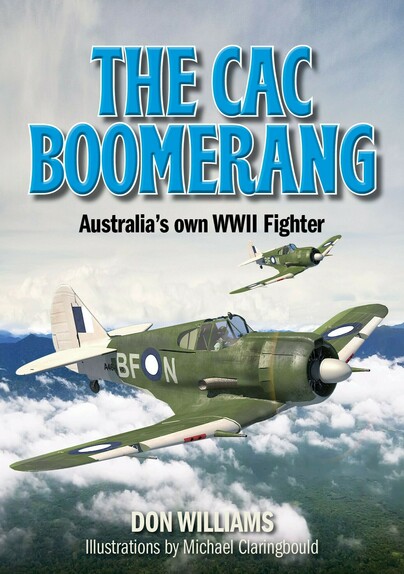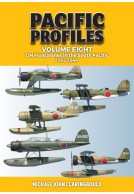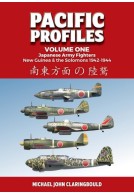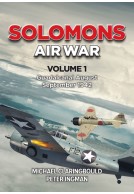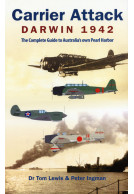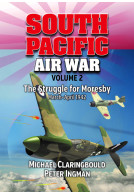The CAC Boomerang (Paperback)
Australia’s own WWII Fighter
Pages: 104
Illustrations: fully illustrated;colour
ISBN: 9780975642320
Published: 6th November 2024
(click here for international delivery rates)
Need a currency converter? Check XE.com for live rates
The CAC Boomerang has a unique place in Australian aviation history, being the nation’s only home designed and produced fighter.
The design was born in dark days at the start of the Pacific War when the RAAF possessed not a single modern fighter and the southwards onslaught of Japanese forces seemed unstoppable. The single seat Boomerang owed its origins to the Wirraway two seat general purpose aircraft produced by the Commonwealth Aircraft Corporation in Melbourne. Because of existing Wirraway production, a Boomerang prototype flew less than six months after the design was conceived – a remarkable achievement.
Lacking the performance of contemporaries such as America’s P-39 and P-40 and Japan’s Zero, the Boomerang’s subsequent history is chequered. It served with three RAAF home defence squadrons in the fighter interceptor role but had only fleeting, unsuccessful, contact with enemy aircraft. However, the Boomerang found its true niche as an army cooperation aircraft, and the type gave very useful service with Nos. 4 and 5 Squadrons in New Guinea and Bougainville.
With hindsight the Boomerang provided an insurance policy if other fighters could not be obtained from the US and Britain. In that role it was successful, and its production maintained a skilled wartime workforce at the CAC factory.
This is the first stand-alone history of the Boomerang. The author Don Williams examines this unique aircraft and its origins, service and the men that flew it.
The CAC Boomerang was a stopgap fighter created in Australia in the dark days of the Pacific War from parts of other aircraft. While it was a functional fighter- and did equip several of Australia's RAAF fighter squadrons to defend the continent whilst better aircraft were on the way from American and the UK, Don Williams, the author shows that it was after the emergency had passed and the aircraft moved from the Fighter Squadrons to the Army Cooperation role that it really shone in combat. Williams, an eclectic author, with many disparate books on different topics, really warms to his subject here, explaining how the weakness as a fighter -lack of speed- was less important and the strength- a strong 20mm Cannon punch in each wing -a real boon as the little plane proved to be a credit in the jungle battles fought by the diggers in the South West Pacific.
Goodreads
Australia might have had the strangest pre-war Aircraft purchasing policy of all the Commonwealth countries. They bought a plethora of aircraft other nations considered Advanced Trainers - the Whirraway- a relative of the T-6 Texan/Harvard- and considered it sorted. When Japan came calling with its Zeros and other high performance aircraft, the Aussies were as caught out as most European Countries who had failed to prepare for war. Commonwealth Aircraft Corporation, who was building the Whirraways from US parts and kits- felt they could make a fighter from their spare pile- and they were able to do it- but with a cost. The aircraft could defend itself in a dogfight- just lacked the speed to intercept or get away from a fight. The P-40s, P-47s and Spitfires turned out to get to Australia in time to do the real heavy lifting in the reconquest of the pacific- but the little Boomerangs came into their own as Army Cooperation aircraft- low and slow over the jungle- with occasional strafing. I think even general audience readers will find the story of the little aircraft that could -compelling.
There are few adult themes save politics - and no graphic injury passages, so this book is a good read for the junior reader over 10/11 years with an aviation interest. For the Gamer/Modeler/Military Enthusiast , this book is one of the few resources on this type, so pretty useful. For the Gamer- all the info you need to try to see if it could have protected Aus from raids if oyup lay Blood Red Skies- and more than enough information to make it part of Flames Of War/Bolt Action/Battlegroup/CoC/WWII ground combat games. The book is also filled with photos and cool silhouette schemes of the type in use, so the modeler and the gamer can paint it correctly. The Military Enthusiast- say a dude like me- gets a whole aircraft type explained- one that fought for the Allies- but was NOT made in the US, UK, or Soviet Russia. This story is rare enough, but the arc of the tale and its particulars make it a really entertaining read.
In the desperate early days of the Pacific War when the Japanese onslaught presented a genuine threat to Australia a project was set in train to develop an indigenous fighter against the potential disruption in supply from Britian and the US. Based on the two-seat Wirraway the appropriately named Boomerang flew just six months after the initial concept. The first half of this beautifully produced and well-illustrated account covers the development and testing of this fighter before moving onto its operational service. Initially deployed as a fighter in defence of western and northern Australia, the ‘Boomer’ had the misfortune to arrive just as significant numbers of Spitfires had arrived that were immeasurably superior fighters. However, the rugged and reliable aircraft was issued to two army co-operation squadrons that saw intensive service in the tropical skies of New Guinea and Bougainville. In the most arduous conditions, its manoeuvrability and robustness were greatly appreciated as it marked targets for artillery and fighter bombers. Illustrated with photographs and colour profiles this is a really useful addition to the bookshelf of both historians and modellers. Although at first sight expensive for a book of this size, it is worth it for the detailed insight into the development of an aircraft that has a unique place in aviation history.
FlyPast
In the desperate early days of the Pacific War when the Japanese onslaught presented a genuine threat to Australia a project was set in train to develop an indigenous fighter against the potential disruption in supply from Britian and the US. Based on the two-seat Wirraway the appropriately named Boomerang flew just six months after the initial concept. The first half of this beautifully produced and well-illustrated account covers the development and testing of this fighter before moving onto its operational service. Initially deployed as a fighter in defence of western and northern Australia, the ‘Boomer’ had the misfortune to arrive just as significant numbers of Spitfires had arrived that were immeasurably superior fighters. However, the rugged and reliable aircraft was issued to two army co-operation squadrons that saw intensive service in the tropical skies of New Guinea and Bougainville. In the most arduous conditions, its manoeuvrability and robustness were greatly appreciated as it marked targets for artillery and fighter bombers. Illustrated with photographs and colour profiles this is a really useful addition to the bookshelf of both historians and modellers. Although at first sight expensive for a book of this size, it is worth it for the detailed insight into the development of an aircraft that has a unique place in aviation history.
Andrew Thomas - Author and Historian







